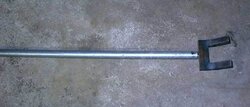O.K,
Opinion needed, are pallets worth all the trouble, I have a company next door that has hundreds of good hard wood pallets for free. I used a few for camp fires, they burn great but the nails are brutal. Will the nails damage my stove, and whats the best way to tear them apart.
Opinion needed, are pallets worth all the trouble, I have a company next door that has hundreds of good hard wood pallets for free. I used a few for camp fires, they burn great but the nails are brutal. Will the nails damage my stove, and whats the best way to tear them apart.



